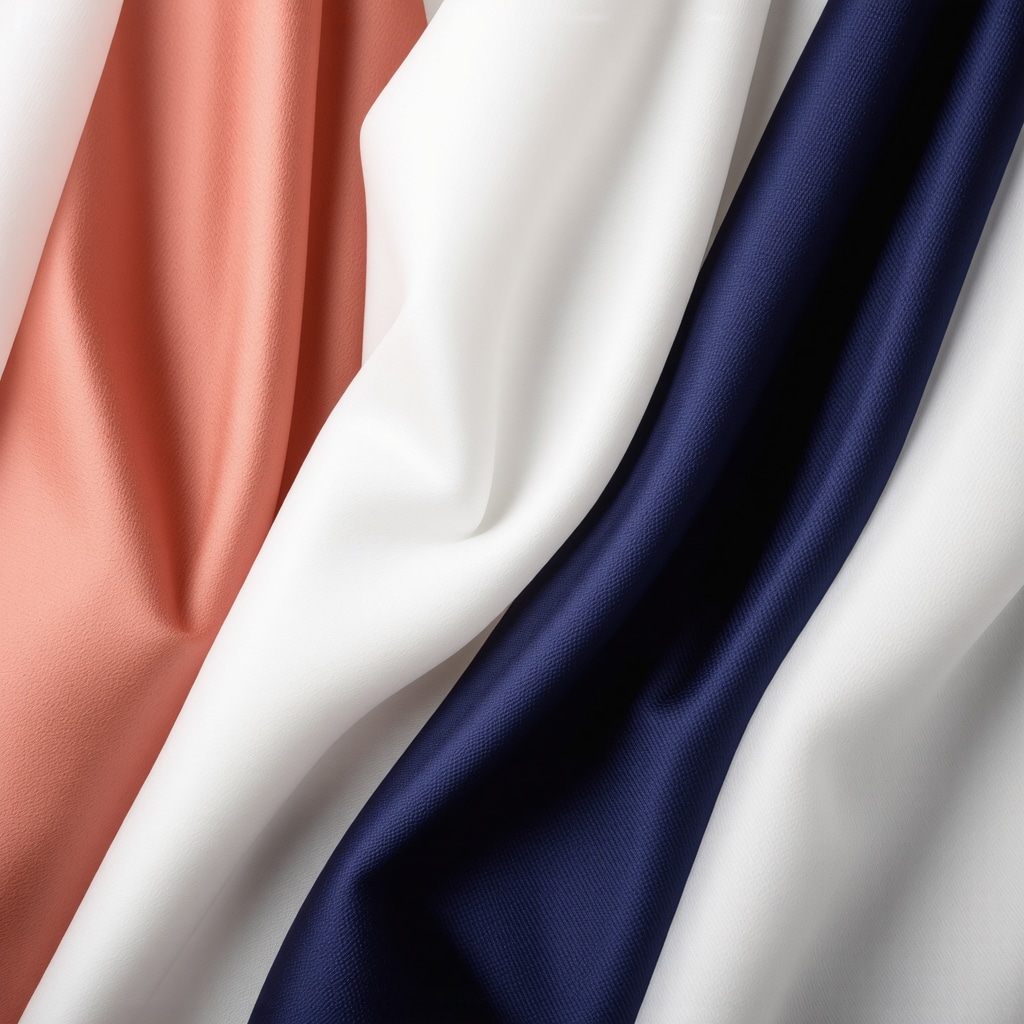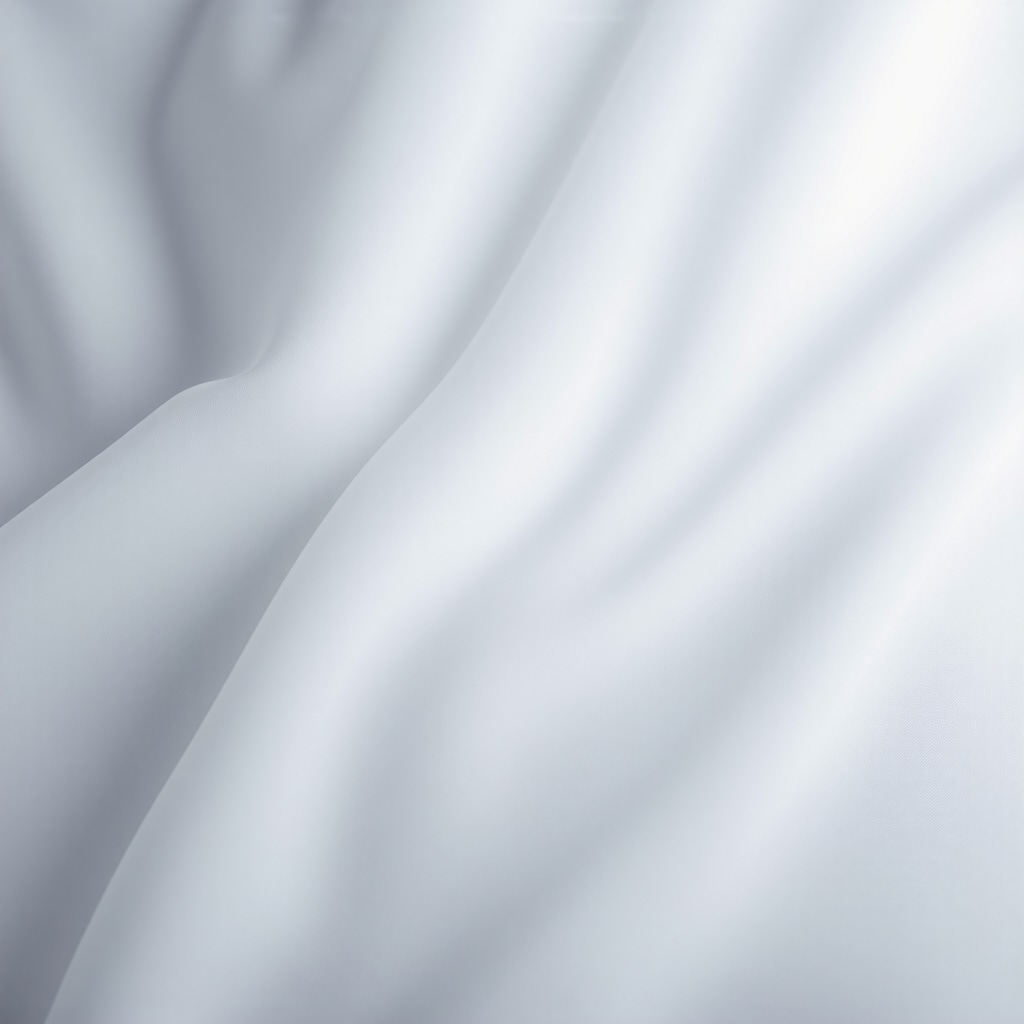Embracing Gentle Fabric Care with Eco-Friendly Cleaning Solutions
Delicate fabrics like silk, cashmere, and lace demand a special touch—one that respects their fragile fibers while also honoring our planet. The rise of eco-friendly cleaners offers a transformative approach to fabric care, marrying sustainability with gentle preservation. These cleaners use plant-based solvents and non-toxic ingredients, eliminating harsh chemicals that can weaken fibers over time. Beyond protecting your garments, this approach reduces environmental impact, aligning with the growing movement toward sustainable living.
Innovative Techniques: How Eco-Friendly Cleaners Safeguard Your Delicates
Eco-friendly cleaning isn’t just a trend; it’s a scientifically informed method that leverages biodegradable solvents and low-impact processes. For instance, plant-based solvents derived from corn or citrus peel can effectively dissolve stains without compromising fabric integrity. These methods avoid perchloroethylene (perc), a traditional dry-cleaning chemical linked to health and environmental risks. By choosing eco-friendly options, you prevent the gradual degradation of fibers caused by harsh solvents and extend the lifespan of your delicate wardrobe. Case studies from sustainable dry cleaners show a significant reduction in fabric wear after repeated cleanings using these greener methods, proving their effectiveness.
How Can You Identify and Use Eco-Friendly Cleaners for Different Fabrics?
Identifying the right eco-friendly cleaner depends on fabric type and stain nature. For delicate silks and wools, opt for organic, pH-balanced detergents free from sulfates and synthetic fragrances. Cotton blends often respond well to plant-based stain removers that gently lift grime without bleaching. Always perform a patch test on inconspicuous areas to ensure colorfastness. When in doubt, professional eco dry cleaning services, such as those specializing in specialty garment care, can provide the safest and most effective treatment tailored to your fabric’s needs.
Enhancing Fabric Longevity: Practical Tips with Eco-Friendly Dry Cleaning
To maintain the delicate balance between cleanliness and fabric health, avoid over-washing and excessive heat exposure. Use cold water cycles with eco detergents and line dry whenever possible to prevent fiber stress. For garments requiring dry cleaning, seek out perc-free dry cleaning services that prioritize chemical-free solvents and sustainable practices. These options not only protect your clothes but also support a cleaner environment, reducing volatile organic compounds and wastewater contamination.
Eco-Friendly Fabric Care: A Commitment Beyond Cleaning
Delicate care with eco-friendly cleaners embodies a holistic philosophy: nurturing your fabrics while championing environmental stewardship. Incorporating these practices into your routine is a meaningful step towards a sustainable wardrobe. From selecting hypoallergenic, non-toxic products to embracing minimalist washing habits, every choice contributes to fabric preservation and ecological responsibility. For more on sustainable fabric care, explore expert tips on protecting luxury wardrobes sustainably.
Have you tried eco-friendly cleaning methods for your delicate fabrics? Share your experiences and tips below to inspire others seeking gentle, sustainable garment care.
For those who want to delve deeper, authoritative insights on the environmental benefits and health safety of plant-based cleaners are extensively documented by the Environmental Protection Agency (EPA Safer Choice Program), a trusted source for evaluating safer chemical alternatives.
Personal Stories: Transitioning to Eco-Friendly Fabric Care
When I first started switching to eco-friendly dry cleaning, I was a bit skeptical. Would these green solvents really protect my silk blouses and cashmere sweaters as well as traditional methods? But after a few visits to a local luxury green dry cleaning service in Tampa, I noticed a remarkable difference. My clothes felt softer, looked fresher, and the subtle, chemical-free scent was a comforting change from the usual harsh odors.
This shift also made me realize that caring for delicate fabrics is about more than just the garments themselves; it’s about the impact our choices have on the environment and our health. I remember once bringing a cherished lace dress to a conventional cleaner and coming back with fabric that felt brittle and faded. Since embracing eco-friendly options, those fears have faded too.
The Science Behind Eco-Friendly Dry Cleaning
It turns out, these plant-based solvents and non-toxic detergents are not just good for the planet but also scientifically superior for preserving fabric integrity. The National Institute of Standards and Technology highlights that conventional solvents like perchloroethylene can cause micro-damage to fibers over time, leading to faster wear and discoloration. In contrast, biodegradable and plant-derived alternatives break down gently, maintaining fabric strength and color vibrancy much longer (NIST Eco-Friendly Solvents Study).
What’s the best way to integrate eco-friendly dry cleaning into your wardrobe routine?
From my experience, it starts with knowing your fabric’s story—what it can handle and what it needs. I now always check the care labels carefully and choose cleaners who specialize in specialty garment cleaning with eco techniques. For example, delicate silks benefit from cold, plant-based cleansers, while wool requires gentle agitation without harsh chemicals. If you’re unsure, don’t hesitate to ask your cleaner about their solvent choices and drying methods.
Also, consider the frequency of cleaning. Over-cleaning is a common mistake that can stress fabrics unnecessarily, even with eco-friendly methods. Spot cleaning with organic stain removers and airing out garments can often extend the time between professional cleanings, which is kinder both to your clothes and the environment.
Incorporating Eco-Friendly Habits Beyond Dry Cleaning
Eco-conscious fabric care doesn’t stop at the dry cleaner’s door. At home, I’ve adopted gentle laundry detergents free from sulfates and artificial fragrances, and I’ve made a habit of air-drying my delicates to avoid heat damage. These small habits complement professional care and prolong garment life.
If you’re curious about exploring these habits further, check out eco-friendly laundry tips for everyday sustainable fabric care. Combining professional eco dry cleaning with mindful home care creates a comprehensive approach to preserving your wardrobe sustainably.
Do you have a favorite eco-friendly fabric care tip or experience with green dry cleaning? I’d love to hear about it—please share your stories and questions in the comments below!
Deep Dive into Fiber Chemistry: Why Eco-Friendly Solvents Preserve Fabric Integrity
Understanding the molecular interactions between cleaning solvents and textile fibers unlocks why eco-friendly dry cleaning methods excel at preserving delicate garments. Traditional solvents such as perchloroethylene (perc) aggressively penetrate fiber structures, causing oxidative stress and weakening keratin and cellulose chains in wool and cotton, respectively. Conversely, plant-derived solvents like d-limonene and methyl soyate exhibit selective solvency with minimal disruption to intermolecular hydrogen bonding and fiber crystallinity. This nuanced chemical compatibility underpins the remarkable longevity of fabrics treated with eco-friendly methods, as fibers maintain tensile strength and color saturation much longer under repeated cleaning cycles.
Strategic Fabric Care: Customizing Eco Techniques for Complex Textile Blends
Complex textile blends, such as silk-cotton mixes or cashmere-polyester composites, pose unique challenges for eco-friendly cleaning. Their varied fiber compositions require tailored solvent and detergent formulations to avoid differential swelling or dye migration. Advanced green cleaners employ enzymatic additives and surfactants designed to selectively target soil without compromising fiber integrity. For instance, protease enzymes break down protein-based stains on silk without affecting synthetic fibers, while biosurfactants derived from microbial fermentation enhance stain emulsification with low environmental toxicity. Such precision formulations represent cutting-edge advances in sustainable fabric care technology.
What Innovations Are Emerging in Eco-Friendly Dry Cleaning for Specialty and High-Performance Fabrics?
Emerging innovations focus on integrating nanotechnology and biodegradable polymers into eco-friendly dry cleaning formulations to enhance stain removal efficacy while further reducing environmental impact. For example, nanoemulsions improve solvent dispersion and penetration to clean high-performance sportswear fabrics that incorporate hydrophobic finishes, all without damaging moisture-wicking properties. Biodegradable polymers act as encapsulating agents for dirt particles, facilitating easier removal and minimizing residue. Ongoing research documented by the American Chemical Society (ACS Environmental Science & Technology) highlights these promising developments, signaling a new frontier in sustainable garment care.
Adopting these advanced eco-friendly methods requires partnering with specialty cleaners who invest in continuous training and state-of-the-art equipment tailored to these novel solvents and additives. By doing so, you ensure your unique and high-value textiles receive scientifically optimized care that balances performance, appearance, and environmental responsibility.
Integrating Eco-Friendly Fabric Care into Luxury Wardrobe Management
For luxury wardrobe curators, the shift towards eco-conscious fabric care involves a comprehensive strategy beyond solvent choice. This includes controlled humidity storage, minimal mechanical agitation during cleaning, and precise temperature regulation during drying to mitigate fiber stress. Additionally, some experts recommend periodic fabric rejuvenation treatments using natural oils or conditioners that restore fiber suppleness without introducing synthetic chemicals. These treatments complement eco-friendly cleaning by maintaining the tactile and aesthetic qualities that define luxury garments.
Such holistic approaches exemplify the pinnacle of sustainable textile stewardship, where every phase of fabric maintenance is optimized for longevity and ecological impact. Engaging with knowledgeable fabric care consultants can provide personalized regimens that align with both conservation goals and your wardrobe’s distinct needs.
Curious about how these advanced eco-friendly techniques could transform your wardrobe care routine? Reach out to specialized eco dry cleaning professionals or explore detailed fabric care guides to unlock tailored solutions.

Unlocking the Potential of Nanotechnology in Sustainable Fabric Cleaning
Recent breakthroughs integrating nanotechnology into eco-friendly dry cleaning formulations are redefining stain removal efficacy while championing environmental stewardship. Nanoemulsions crafted with biodegradable surfactants enhance solvent dispersion and penetration, specifically targeting stubborn soils on technical textiles without compromising fiber integrity or functional finishes such as moisture-wicking or UV protection. This precise molecular interaction minimizes the need for aggressive chemical agents, thereby reducing ecological footprint and prolonging garment lifespan.
Simultaneously, encapsulating dirt particles using biodegradable polymers facilitates effortless dirt detachment and prevents residue buildup, a crucial advancement for maintaining high-performance fabrics. These innovations represent a significant leap towards sustainable fabric care, aligning with contemporary demands for both performance preservation and environmental responsibility.
How Are Emerging Eco-Friendly Solvent Technologies Tailored for Complex Textile Compositions?
Complex blends, such as silk-polyester or cashmere-nylon composites, require solvent systems that harmonize varied fiber chemistries without inducing dye migration or fiber distortion. Advanced eco-friendly solvents incorporate enzymatic additives—like proteases and lipases—targeting specific stain chemistries while maintaining fiber cohesion. For example, proteolytic enzymes selectively degrade proteinaceous stains on silk without affecting synthetic fibers, while biosurfactants derived from microbial fermentation enhance emulsification of lipid-based soils with minimal toxicity.
These solvent formulations are meticulously calibrated to preserve intermolecular hydrogen bonds and fiber crystallinity, preventing premature wear and color fading often associated with traditional dry cleaning agents.
Mastering the Art of Sustainable Luxury Wardrobe Preservation
For custodians of luxury wardrobes, eco-friendly fabric care transcends solvent choice, encompassing a holistic regimen that includes controlled microclimate storage, gentle mechanical handling, and natural fiber rejuvenation. Employing natural oils and conditioners derived from plant extracts restores suppleness and tactile quality without introducing synthetic residues. Such treatments, combined with precision temperature and humidity regulation during cleaning and drying, mitigate fiber stress and oxidative damage.
Partnering with fabric care consultants specializing in sustainable textile stewardship ensures bespoke maintenance protocols that extend garment longevity while aligning with ecological ethics.
Explore how integrating these sophisticated eco-friendly fabric care strategies can elevate your wardrobe management. Connect with expert eco dry cleaning professionals or consult comprehensive fabric care resources for tailored solutions.
For authoritative insights into the environmental and health benefits of these innovative cleaning technologies, consult the American Chemical Society’s Environmental Science & Technology journal (ACS Environmental Science & Technology), which meticulously documents recent advances in biodegradable solvent systems and nanotechnology applications in textile care.
Ready to revolutionize your fabric care routine with cutting-edge, eco-conscious methods? Engage with specialized green dry cleaning services today and safeguard your wardrobe’s future while contributing to a healthier planet.

Frequently Asked Questions (FAQ)
What makes eco-friendly dry cleaning safer for delicate fabrics compared to traditional methods?
Eco-friendly dry cleaning utilizes plant-based, biodegradable solvents and non-toxic detergents that gently interact with fabric fibers, avoiding harsh chemicals like perchloroethylene (perc) known to cause fiber degradation and color fading. These greener solvents preserve the molecular integrity of delicate textiles such as silk, wool, and cashmere, extending garment lifespan while minimizing environmental and health risks.
How can I identify true eco-friendly cleaning services and products?
Look for certifications such as EPA Safer Choice or Green Seal that verify non-toxic, biodegradable formulations. Services should openly disclose solvent types, favoring perc-free and plant-derived solvents like d-limonene or methyl soyate. Additionally, reputable eco cleaners will emphasize gentle handling, low-temperature processes, and sustainable waste management. Always verify ingredient transparency and test on inconspicuous garment areas if possible.
Are eco-friendly solvents effective on tough stains typically removed by conventional dry cleaning?
Yes. Advanced eco-friendly formulations incorporate enzymatic additives and biodegradable surfactants that target protein, lipid, and particulate soils with precision. Innovations such as nanoemulsions enhance solvent penetration and dirt encapsulation, improving stain removal efficacy without compromising fabric integrity or finishes, even on complex textile blends.
Can eco-friendly dry cleaning accommodate luxury and high-performance fabrics?
Absolutely. Eco-friendly techniques are often tailored for specialty textiles through customized solvent blends and gentle mechanical action. Experts employ natural fiber conditioners and controlled environmental conditions to maintain tactile qualities and functional properties, ensuring luxury and performance garments receive optimal care while upholding sustainability standards.
How often should delicate garments be dry cleaned using eco-friendly methods?
Frequency depends on garment usage and soil accumulation. Over-cleaning stresses fibers regardless of solvent type. Spot cleaning with organic removers and airing garments can reduce the need for frequent professional cleanings. When cleaning is required, eco-friendly dry cleaning minimizes fiber wear, making it suitable for periodic maintenance without sacrificing fabric health.
What home care practices complement eco-friendly dry cleaning for delicate fabrics?
Use sulfate-free, pH-balanced detergents and cold water cycles for hand or machine washes. Air-drying reduces heat stress, and gentle handling avoids mechanical damage. Combined with professional eco dry cleaning, these practices form a comprehensive strategy to preserve fabric strength and appearance sustainably.
Are there any risks or limitations to eco-friendly dry cleaning?
While generally safer, some eco-friendly solvents may have limited effectiveness on certain synthetic finishes or extremely stubborn stains, necessitating specialized treatment. Additionally, availability of certified eco-friendly services can vary regionally. It’s important to consult with experienced cleaners and conduct fabric-specific assessments to ensure optimal results.
How does nanotechnology enhance eco-friendly fabric cleaning?
Nanotechnology introduces nanoemulsions and biodegradable polymers that improve stain removal by increasing solvent dispersion and dirt encapsulation at a molecular level. This allows cleaning agents to penetrate fibers more effectively and remove soils without harsh chemicals, preserving textile performance and reducing environmental impact.
What role do enzymes play in eco-friendly cleaning formulations?
Enzymes such as proteases and lipases selectively break down protein- and lipid-based stains without damaging synthetic fibers or dyes. Their biodegradability and specificity make them ideal additives to eco-friendly solvents, enhancing cleaning power while maintaining fabric integrity and reducing chemical load.
How can I integrate eco-friendly fabric care into managing a luxury wardrobe?
Adopt a holistic regimen combining eco-friendly dry cleaning with controlled storage conditions—such as regulated humidity and temperature—and periodic natural fiber rejuvenation treatments. Partnering with fabric care consultants specializing in sustainable stewardship ensures tailored protocols that maximize garment longevity and sustainability.
Trusted External Sources
- Environmental Protection Agency (EPA) Safer Choice Program – Provides rigorous evaluation and certification of safer chemical alternatives, including eco-friendly cleaning agents, ensuring non-toxicity and environmental compatibility.
- National Institute of Standards and Technology (NIST) – Offers scientific research on solvent effects on fiber chemistry, supporting evidence-based recommendations for eco-friendly dry cleaning solvents preserving fabric integrity.
- American Chemical Society (ACS) Environmental Science & Technology Journal – Publishes cutting-edge studies on biodegradable solvents, nanotechnology applications, and enzymatic additives advancing sustainable textile care technologies.
- Textile Research Journal – Delivers peer-reviewed research on fiber chemistry, fabric treatments, and innovative cleaning methodologies relevant to eco-friendly fabric care.
- International Fabricare Institute (IFI) – Industry authority providing best practices, guidelines, and certification programs focused on sustainable dry cleaning and fabric maintenance.
Conclusion
Transitioning to eco-friendly dry cleaning represents a pivotal advancement in sustainable fabric care, harmonizing effective stain removal with preservation of delicate textiles. By leveraging plant-based solvents, enzymatic formulations, and emerging nanotechnologies, these methods minimize environmental impact while safeguarding fiber strength, color, and tactile quality. Integrating eco-conscious practices both professionally and at home fosters a holistic approach to wardrobe longevity, particularly important for luxury and complex fabric blends. Embracing this paradigm not only enhances garment durability but also aligns with broader health and ecological priorities.
Empower your fabric care routine by choosing trusted eco-friendly services and adopting mindful maintenance habits. Share your experiences, explore specialized resources, and contribute to a greener future for textile stewardship.


I appreciated the practical focus on plant-based solvents and enzyme additives — I switched to a perc-free cleaner two years ago for my silk blouses and cashmere cardigans and noticed they stayed softer and held color longer. One tip that helped: always ask the cleaner what solvent they use (I look for d-limonene or methyl soyate) and request a patch test on seams or an inside hem before treating an entire garment. At home I complement professional care with spot-cleaning using a gentle, enzyme-based remover and air-drying on a padded hanger to avoid heat and mechanical stress. For storage, controlled humidity and cedar blocks have reduced moth damage without chemical mothballs. I’m also intrigued by the article’s mention of nanoemulsions — has anyone tried a cleaner that uses nanotech formulations and noticed a difference on high-performance or hydrophobic fabrics? And for people who manage a luxury wardrobe, how do you balance professional eco cleanings with at-home maintenance to avoid over-cleaning while keeping garments ready to wear?